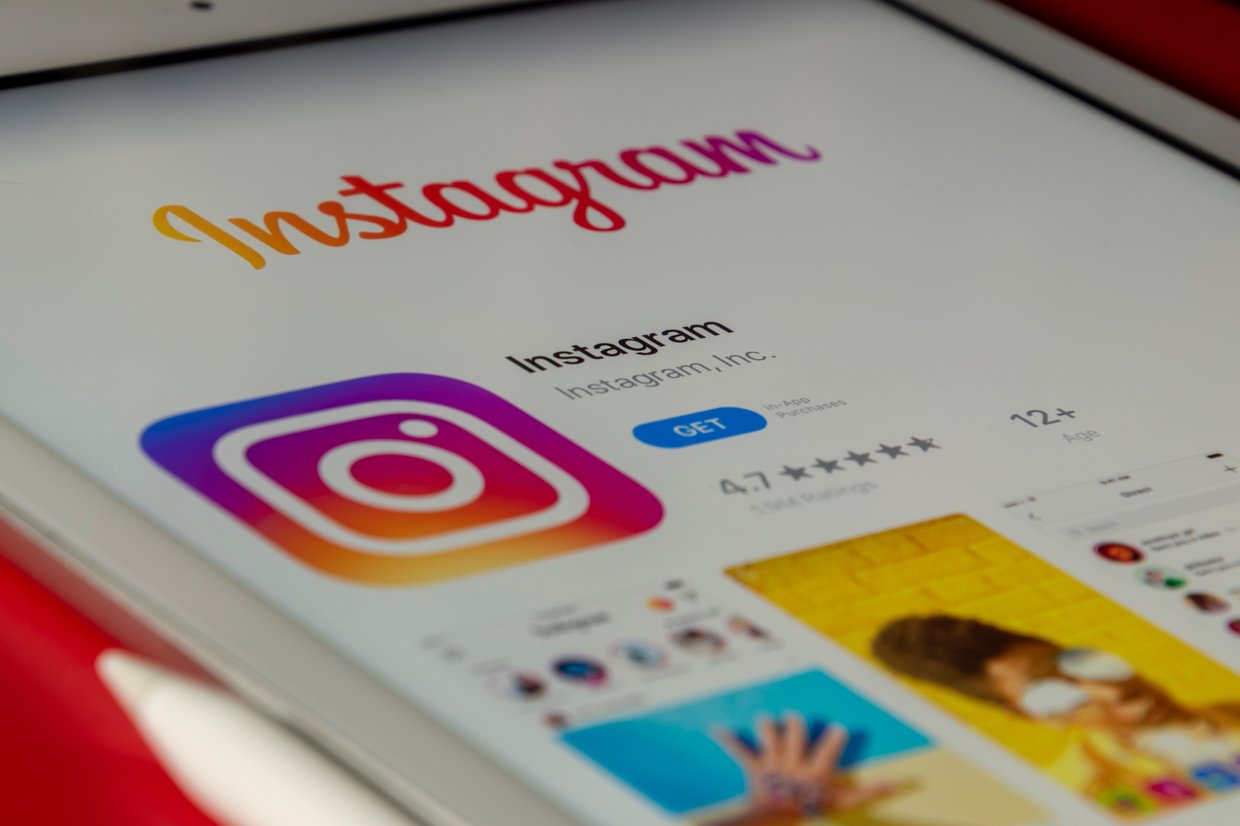‘
For many years Instagram was the undisputed leader of the social media platforms. Just 12 months after launch, it had acquired 10 million users, and it had 1 billion users by June 2018. By 2021, Instagram had generated around $25bn in ad revenue for parent company Meta. It has helped build influencer careers and activist communities, as well as helping people stay connected with their friends and family and the brands and influencers they like.
Despite that success, Instagram has recently been making changes in order to address the threat posed by TikTok. However, those changes are proving deeply unpopular with users, provoking a backlash against Instagram. Is it losing touch with what made it so popular?
The TikTok-shaped elephant in the room
It won’t come as a surprise that TikTok has enjoyed spectacular growth over the last four years. Just four years after its launch, it had 1 billion active users – not far off Instagram’s 1.3 billion. Many experts believe that it will soon overtake Instagram in this respect. In terms of engagement, TikTok is far ahead of its rival: users spent an average of 25.7 hours a month on TikTok in 2021, compared to just 7.9 hours on Instagram. TikTok is also the favored social platform of teens: 33% said it was their preferred platform in 2021, compared to 31% for Snapchat at 22% for Instagram.
And while Instagram still dominates in terms of ad revenue – $47.6bn in 2021 compared to TikTok’s $4bn – TikTok’s is projected to raise to nearly $12 billion this year, making it bigger than Snap and Twitter combined. It’s on track to become a serious threat to Google/Meta duopoly of digital advertising.
Reeling them in with Reels
Meta is clearly flustered by TikTok’s continued growth. Its response has been to significantly increase its focus on video on both Facebook and Instagram. Indeed, Mark Zuckerberg said on a call to investors that Reels is a major part of Meta’s TikTok defence strategy. Instagram launched Reels – short, snackable videos – back in 2020, and have given them increasing prominence ever since. In 2021, Instagram CEO Adam Mosseri announced that the platform would be pivoting to video because ‘we’re no longer a photo-sharing app. People are looking to Instagram to be entertained. We have to embrace that’. Instagram started adding slots for recommended videos from accounts users didn’t follow into their regular feeds. In summer 2022, it announced that all videos posted onto Instagram would become Reels.
A backlash against Instagram
This approach, whilst understandable given the wider move towards video, has thrown up a number of problems for Instagram. Chief among them is the effect that it has had on user experience. A large proportion of users’ feeds is now content from people they don’t know, usually in the form of Reels. Posts from their friends and people they follow are drowned out by a cacophony of video clips and sponsored content. Testing of a full-screen feed, similar to TikTok’s, has exacerbated the issue.
Instagram has suffered a significant backlash, with highly influential users such as Kylie Jenner and Kim Kardashian, who each have more than 300 million followers, criticizing its new strategy. Other users have commented that Instagram no longer feels like somewhere to share photos and videos, but more like a ‘chaotic hub for Meta to build relationships with brands’. The danger is, of course, that by neglecting the user experience, Instagram is deterring the very audiences that those brands are paying to access.
Why do users love TikTok but hate Instagram’s move into video?
It’s not the move into video per se that is behind the Instagram backlash. There is a clear movement into video by creators. Users are lapping it up on many platforms, including – and particularly – TikTok. So why has TikTok got it right and Instagram wrong?
A key factor in TikTok’s success is its superior algorithm, with its remarkable ability to suggest content that users love. An effective algorithm relies on high-quality data, and TikTok is pretty aggressive in how it harvests data from its users – much more insistently than Facebook or Instagram. This means that good content on TikTok reaches millions of users, even if the creator has no followers. This makes it a very attractive platform for creators, and therefore brands.
Another factor in the discrepancy between TikTok and Instagram is the simple fact that Instagram appears to be trying to be TikTok – but users want it to be Instagram. Its huge popularity grew from sharing photos and stories. This allowed users to connect with their friends as well as the brands and public figures they liked. Right now, Instagram seems to be actively pushing against that original mission by suppressing content from people you follow in favor of suggested Reels from people you don’t. And in following this path, it is losing sight of what made it so popular in the first place.
It’s not just TikTok that Instagram copies
Meta has form for copying or acquiring innovative products. Some critics suggest that this is because innovation at the company is lacking. Just last week, Meta announced that Instagram is testing another feature which appears to be copied directly from a competitor. Candid Challenges mimics the BeReal concept, which prompts users to post an unfiltered photo of themselves once a day. It has tapped into a desire for authenticity, which allowed it to push Facebook out of the Top 10 apps on the App store. However, Instagram faces a challenge thanks to its user interface. Candid Challenges risks getting lost in the myriad Instagram features. Meanwhile, BeReal is designed around this single purpose – much like TikTok with snackable videos.
However, Meta had much more success with Stories, which took Snapchat’s disappearing photos as inspiration. Their success came from a desire for realness and authenticity – people were beginning to feel that their everyday lives weren’t ‘Insta-worthy’, so they stopped posting every day. Stories – which delete after 24 hours – meant that they required less thought. In two years, Stories attracted 400 million daily users and changed the way that people share and consume online.
After the backlash, what does Instagram’s future hold?
To see off the backlash, Instagram needs to sort out its user experience. Mosseri has recognized that the full-screen feed is ‘not yet good’, and said that ‘I want to be clear: we’re going to continue to support photos, it’s part of our heritage’. But he still maintains that videos are the future. ‘More and more of Instagram is going to become video over time. We see this even if we change nothing’. Clearly users will engage more with video if video is what they are fed, but Mosseri is right that video is undoubtedly the future. It makes sense for Meta to continue its drive towards video, so that it maintains a key role in the creator ecosystem.
Another factor that Instagram has in its favour is that it is by far the largest platform for influencer market. Furthermore, its wide variety of content formats are almost all shoppable, which is a big draw for advertisers.
It’s not over for Instagram. It is so much bigger than TikTok that it shouldn’t need to mimic what the Chinese social platform is doing. In doing this, it risks losing sight of what made it popular in the first place, and alienating its users. It needs to find a way to hero what users want from it – namely, sharing and seeing photos – and integrate Reels seamlessly, in a way that works for users, creators and advertisers.
What does it all mean for advertisers?
First things first: despite the backlash, Instagram isn’t going anywhere, so don’t pull your social spend from the platform.
Advertisers should remember to follow buying power and respond to demographic characteristics. The belief that users stay with the platform they have grown up with appears unfounded: teenagers, for example, seem to migrate to Instagram as they enter early adulthood. They are moving to Instagram as they accrue buying power, making Instagram a wise choice for media investments. What’s more, younger people – on TikTok – learn faster and require less frequency to remember an ad or brand, which means less investment is required on TikTok. Even Instagram seems not to have realised this.
However, TikTok should still play a key part in any advertiser’s marketing strategy, especially those seeking to target a younger audience. And the very fact of TikTok’s success and Instagram’s pivot to video should point the way to a video-first future. Social content can no longer just be about photos – it needs to feature short, engaging video too. Brands need focus on their video game and optimize their content for the platform on which they are publishing.




.png)




